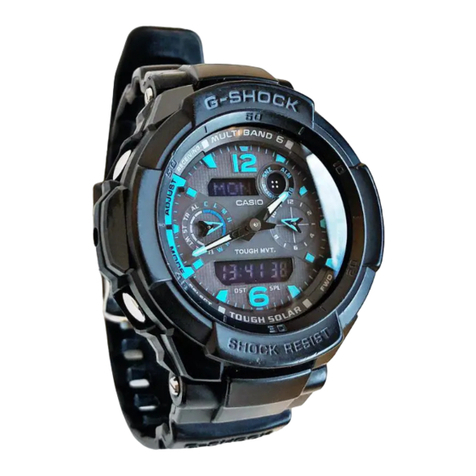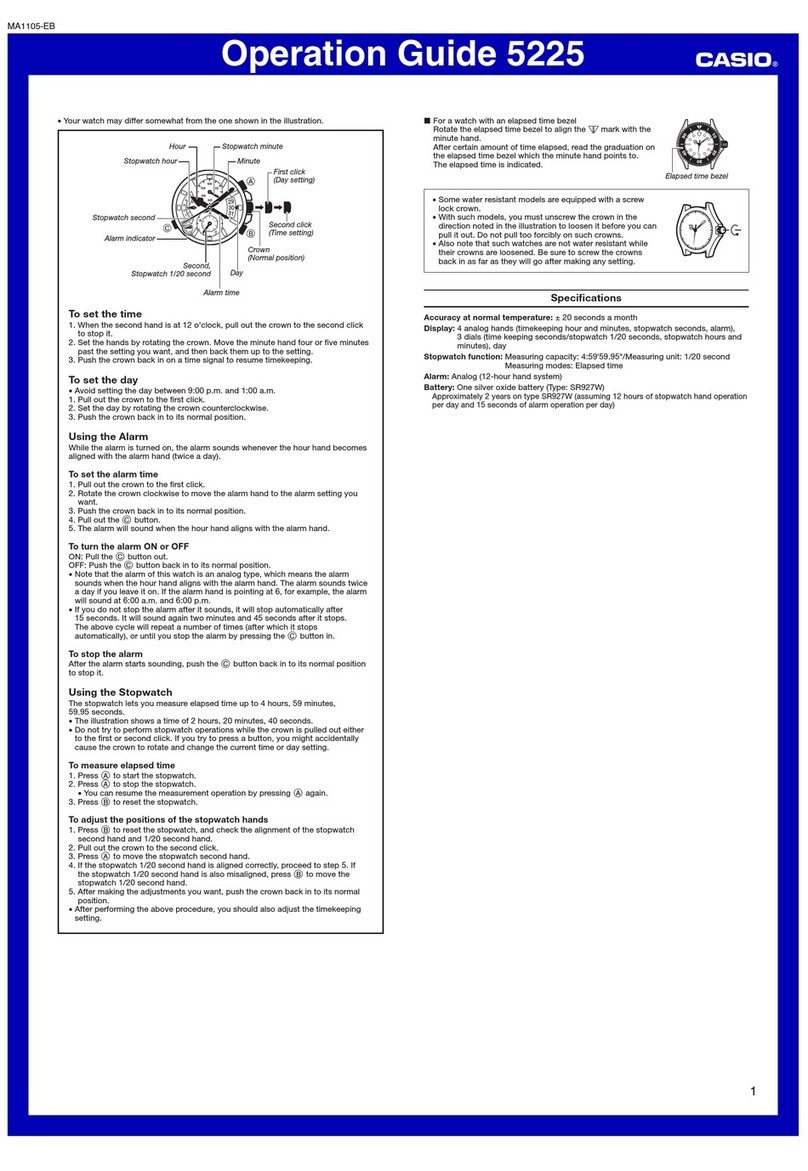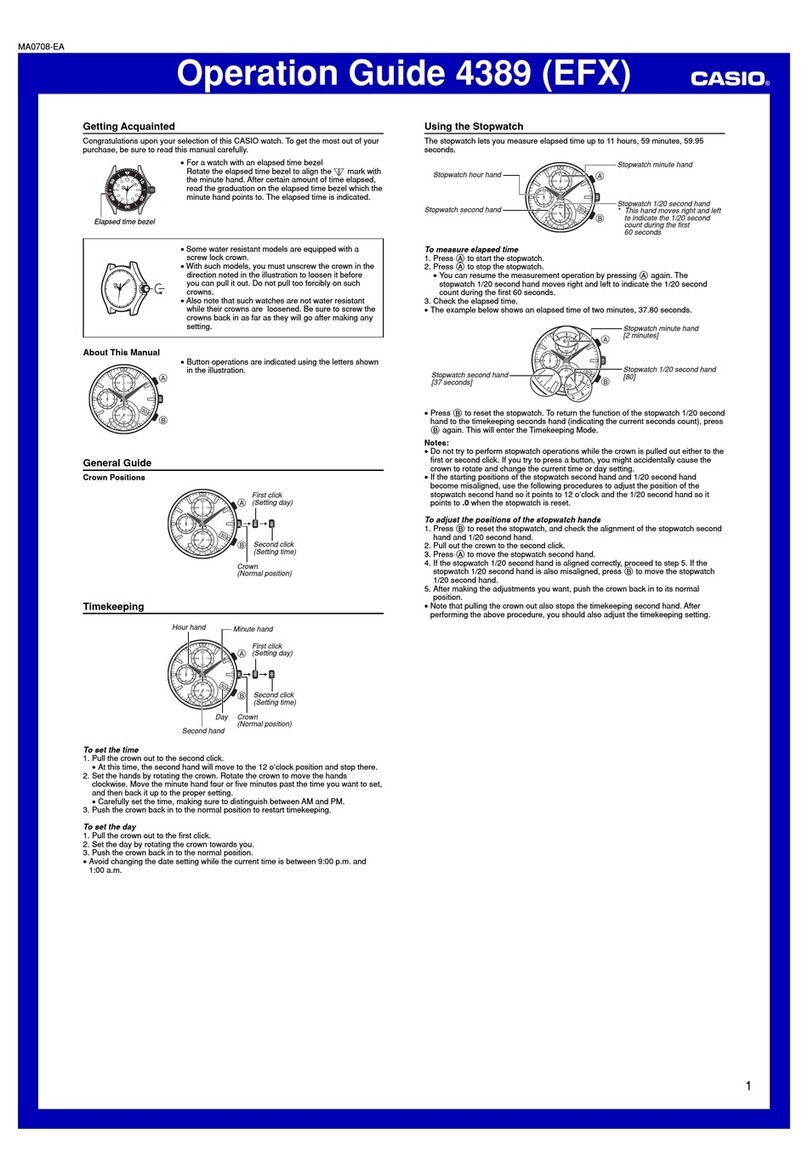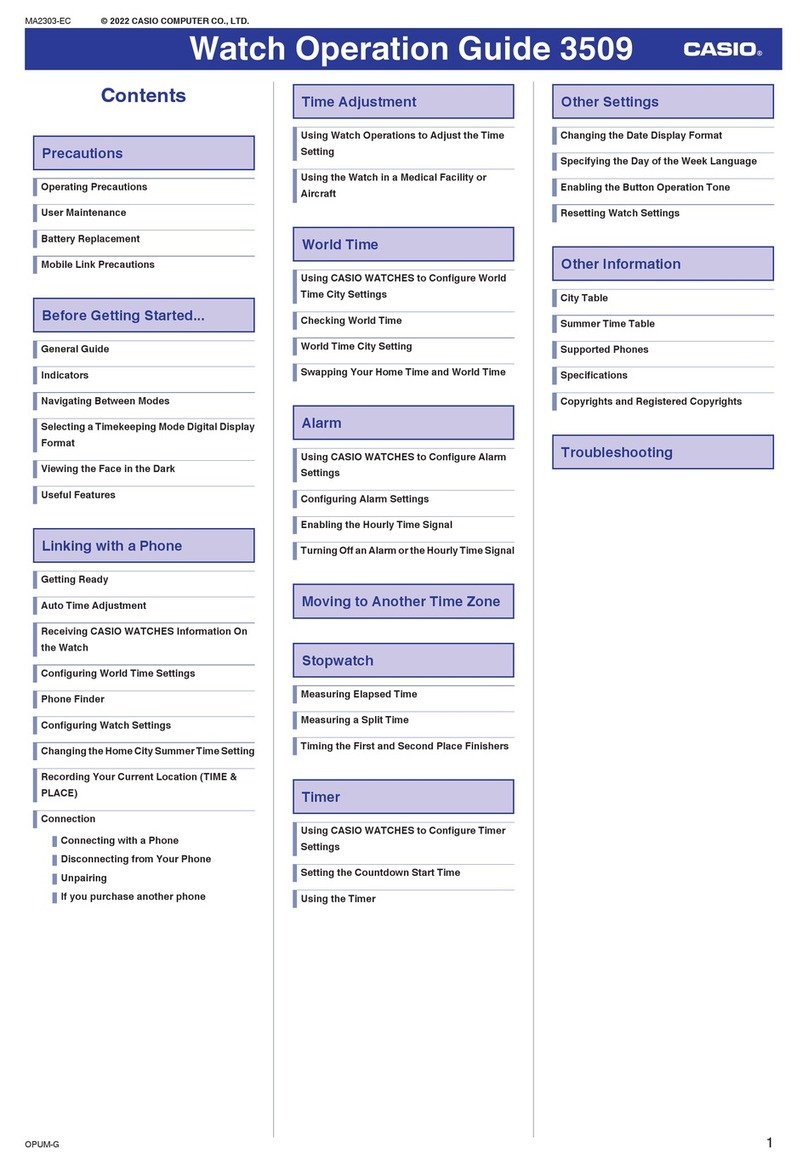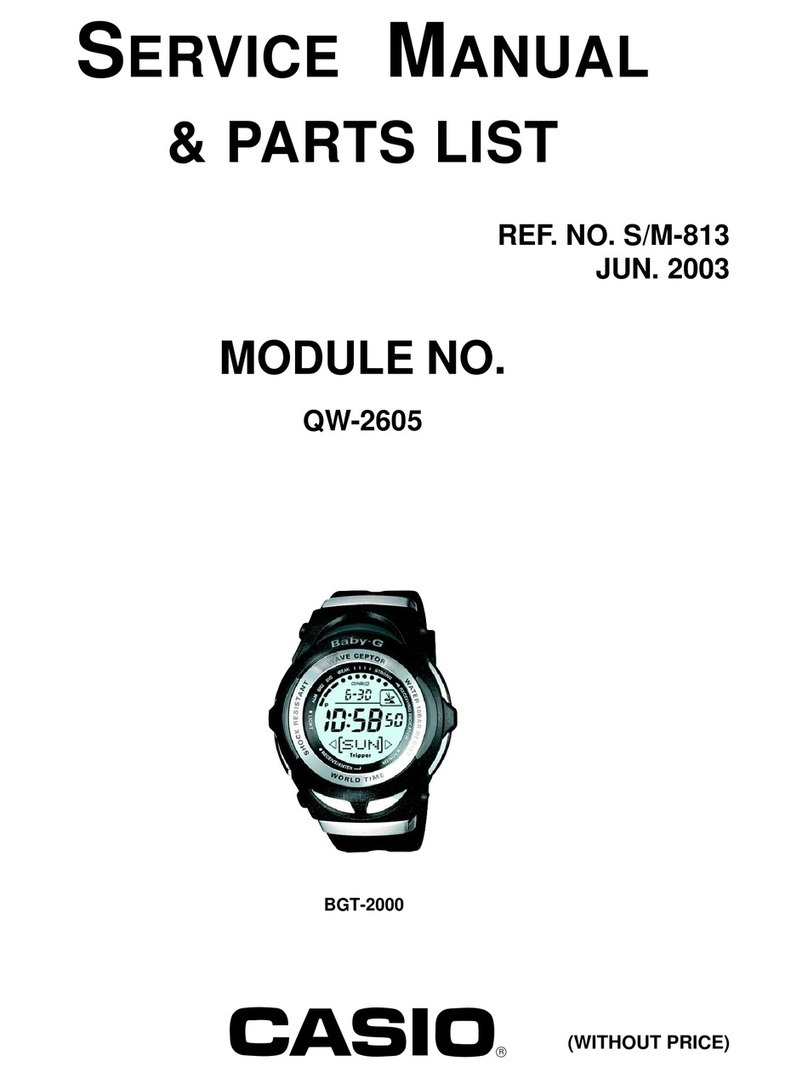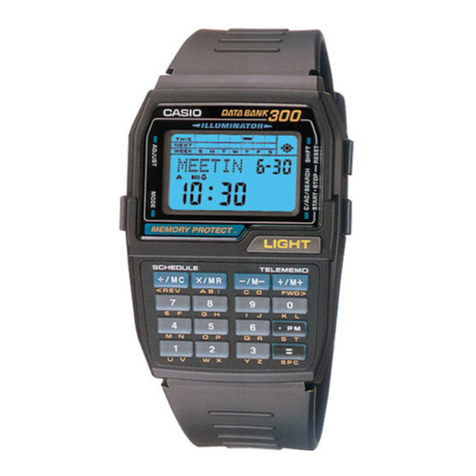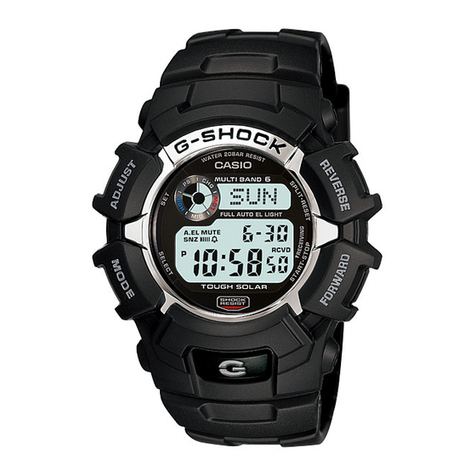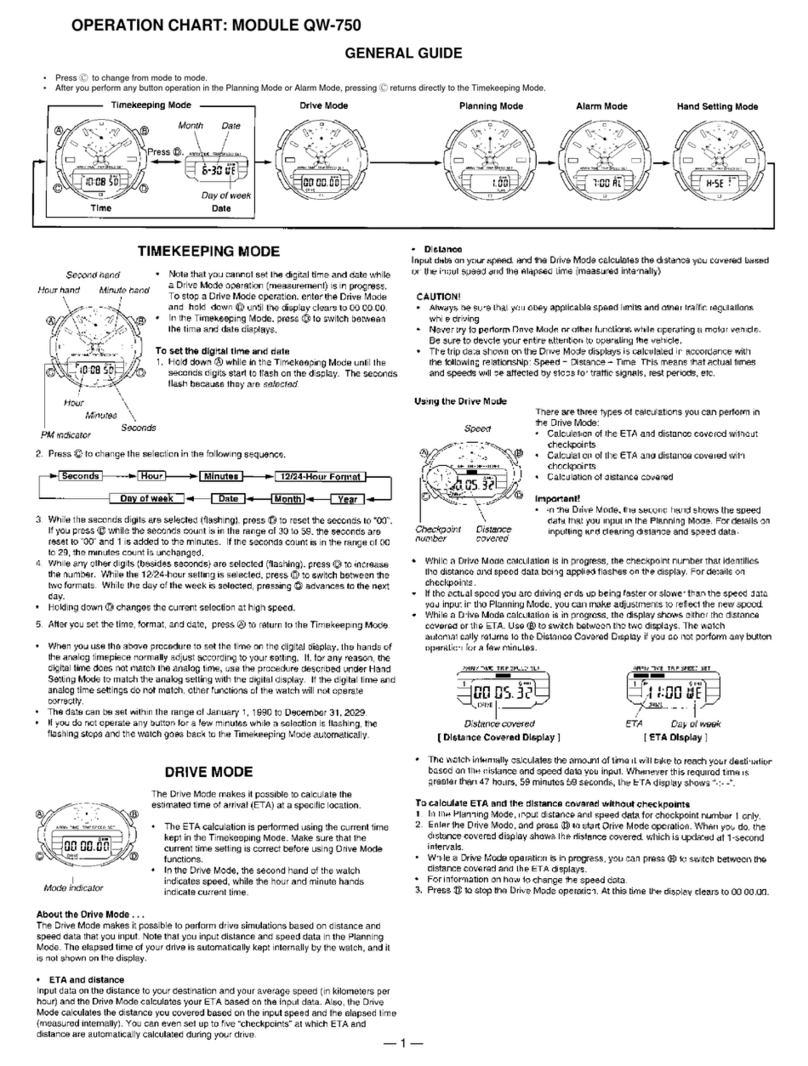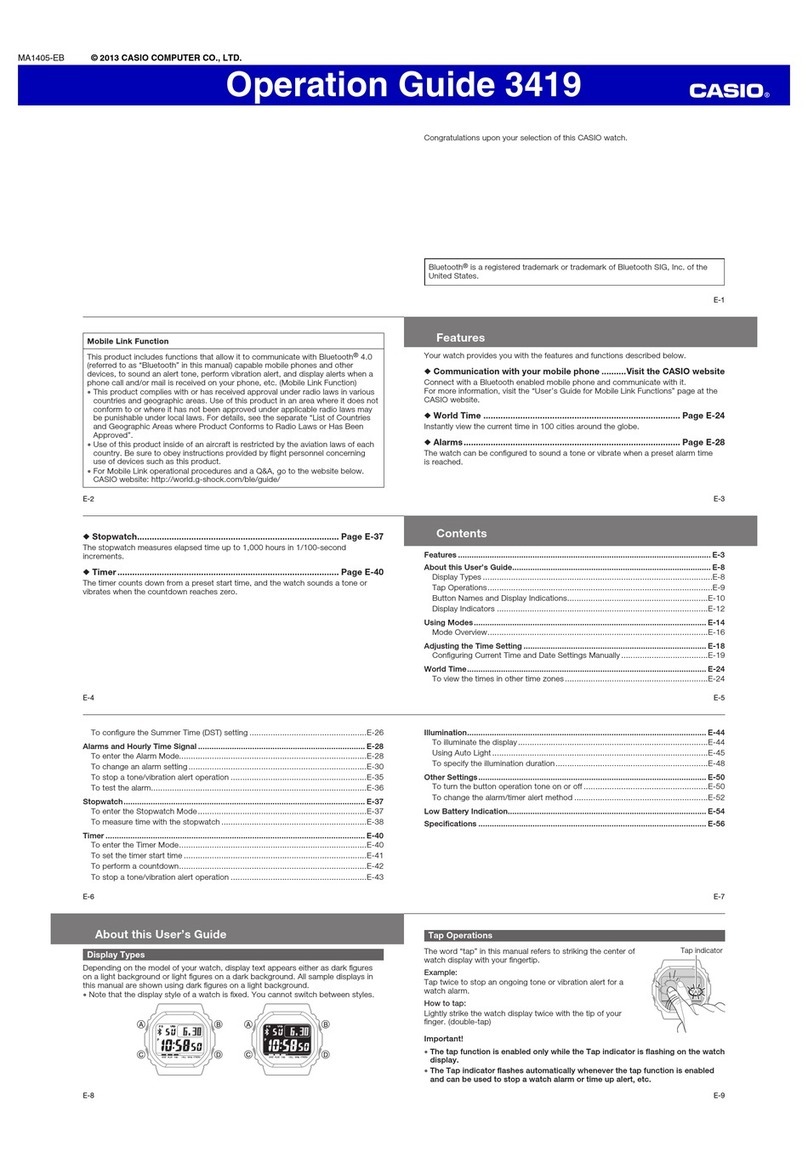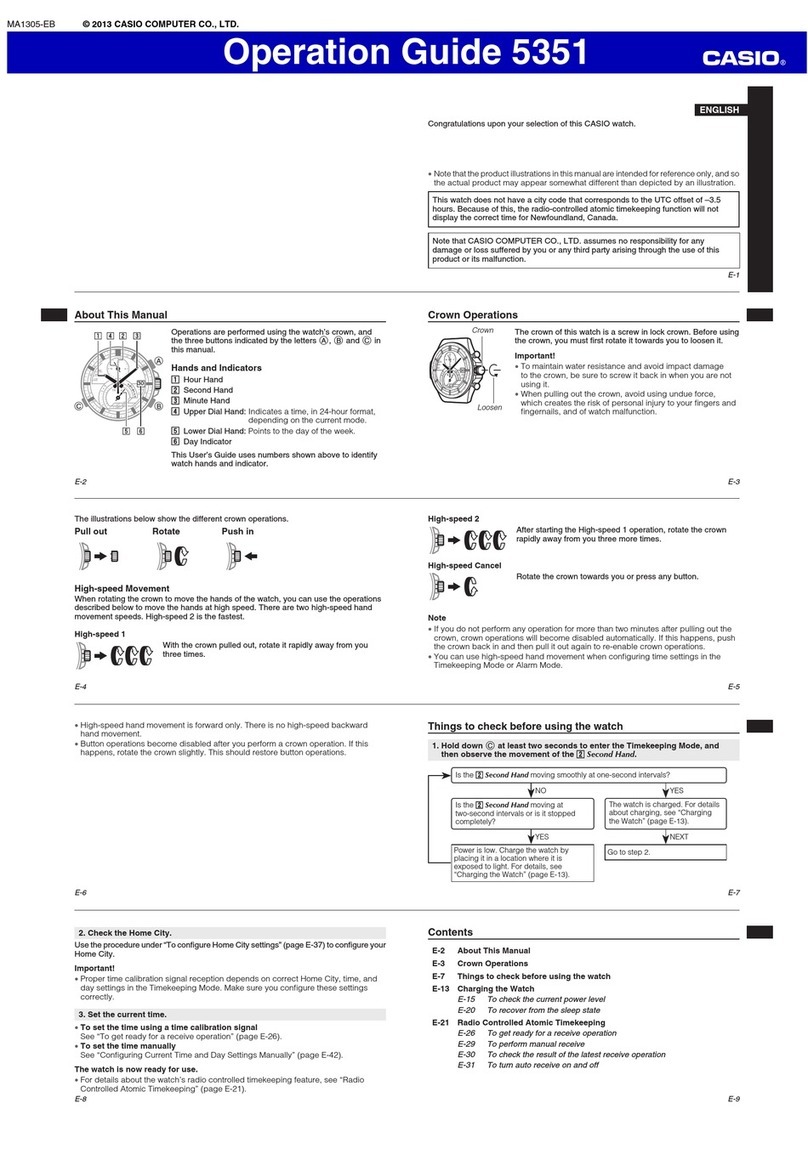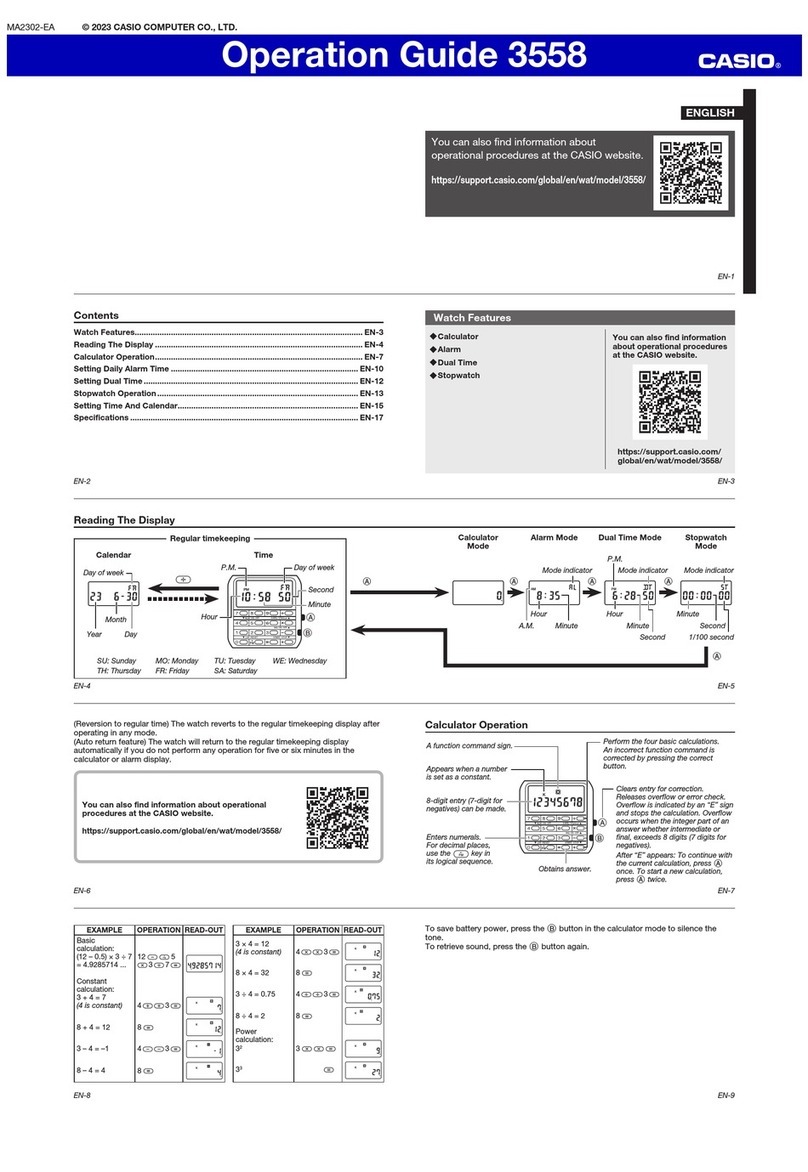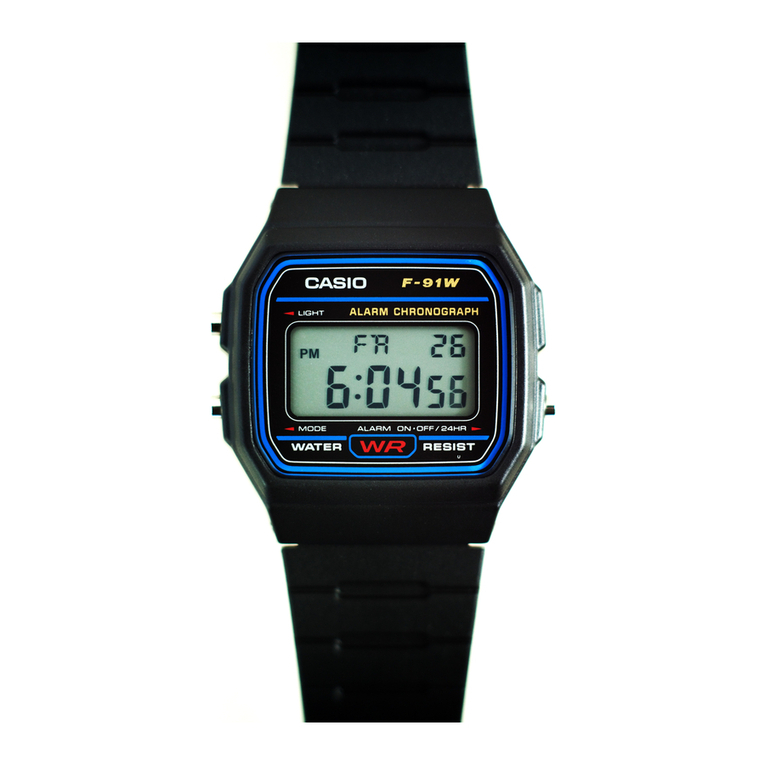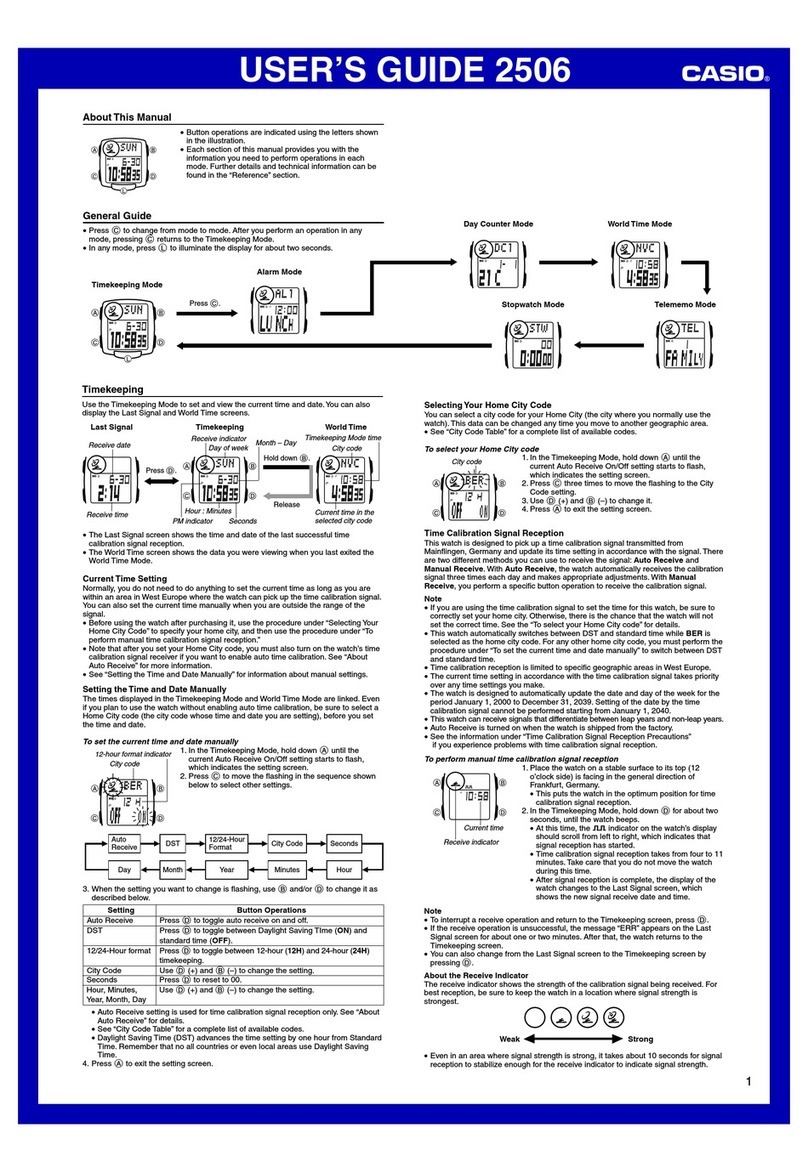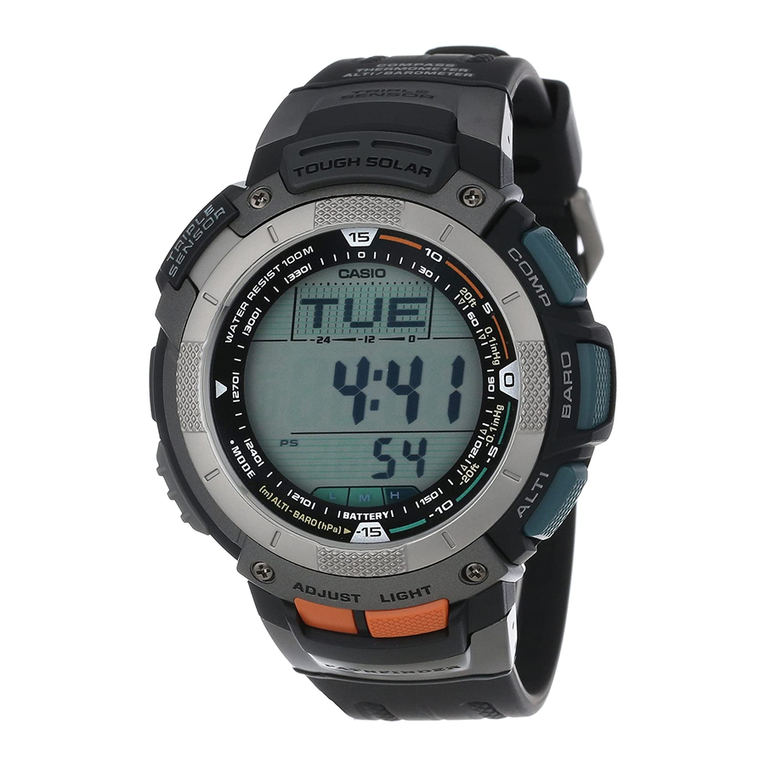1570-10
Leather Band
To fasten the band on your wrist
1. Pass the end of the band through the opening in
the lock cover and then through the belt loop.
2. Fold the buckle over the two metal pieces, and
press down on the buckle until it snaps into
place.
3. Close the lock cover and press down until it
snaps into place.
•To remove the band from your wrist, pull up on the
sides of the lock cover with your thumb and
forefinger to release it, and then unfold the buckle.
To adjust the length of the band
1. Pull up the flap on the inside of the buckle to
release the band, and then slide the band in or
out to adjust its length.
Caution!
The resistance of the flap is quite strong, so do
not use your fingernail when pulling it up.
Instead, use a screwdriver or other similar tool.
2. After the band is the length you want, fold the
flap back down to lock it in place.
Trimming the tip of the band
Band trimming is optional. Use scissors to cut off the tip of the band to
eliminate any excess that protrudes from the buckle after you adjust the length
of the band. It is recommended that you cut the band at a point that is 5 to 10
mm inside the tip of the buckle.
Important!
•Always handle scissors and other cutting tools with care to avoid personal
injury.
•Take care not to trim too much off the end of the band. It is probably best to
cut off a little at a time until you get the band to the length you want.
•Cutting the band may cause the ends of the thread of the remaining part to
come loose. If this happens, do not pull on the thread. Trim the loose thread
with scissors.
Using the Band Clip
Be sure to attach the band clip to the watch and then attach the watch to your
belt whenever using the Trekking Counter. Failure to attach the Trekking
Counter correctly to your belt can produce poor measurement accuracy.
To attach the band clip
1. Press the buttons on the sides of the two band
clasps to release them, and remove the bands.
2. Close the band clasp at the top (12 o’clock
position) of the watch. Squeeze gently but firmly
until it locks in place.
3. Hook the band clip into the band clasp
at
the bottom (6 o’clock position)
, and then
close the clasp. Squeeze gently but
firmly until it locks in place.
4. Attach the band clip to your belt.
Trekking Counter Precautions
•Be sure to turn off the Trekking Counter when: taking part in any activity
involving jumping, bending, stretching, etc.; resting; riding a bicycle, train,
bus, or any other vehicle that vibrates.
•Any of the following can cause measurements to lose accuracy: walking on
loose ground, up or down steep slopes; running; shuffling your feet; uneven
strides; walking in sandals, shower shoes, or similar footwear; walking up or
down stairs.
•Measurements may become inaccurate or even fail entirely if the watch is
exposed to strong magnetic force.
•Always be sure to fasten the band clip to the bottom (6 o’clock position) of
the watch, and not to the top (12 o’clock position).
•Take care to avoid dropping the watch while walking.
•When using the Trekking Counter, make sure the watch is not resting
against your clothing or waist pack. If the watch is not hanging loosely, the
Trekking Counter will not be able to count your steps correctly.
•When walking up stairs or performing other activities that requires raising of
the leg, measurement accuracy can be affected by the watch bumping
against or riding on your leg. In such a case, try to position the band clip so
it hangs naturally, away from your leg.
•Wear the band clip so it is located in front of your body. This helps to make
sure the watch and band clip do not become accidentally caught on
something and pulled off your belt.
Belt loop
Lock cover
Metal pieces
Buckle
Buckle
Flap
Tip of buckle
Band clasp
6 o’clock position
Band clip
12 o’clock position
Metal Band
To fasten the band on your wrist
1. Fold the buckle over the two metal
pieces, and press down on the
buckle until it snaps into place.
2. Close the lock cover and press
down until it snaps into place.
•To remove the band from your wrist,
pull up on the sides of the lock cover
with your thumb and forefinger to
release it, and then unfold the buckle.
Using the Band Clip
Be sure to attach the band clip to the watch and then attach the watch to your
belt whenever using the Trekking Counter. Failure to attach the Trekking
Counter correctly to your belt can produce poor measurement accuracy.
To attach the band clip
1. Press the buttons on the sides of the
two band clasps to release them,
and remove the bands.
2. Close the band clasp at the top (12
o’clock position) of the watch.
Squeeze gently but firmly until it
locks in place.
3. Hook the band clip into the band
clasp
at the bottom (6 o’clock
position)
, and then close the clasp.
Squeeze gently but firmly until it
locks in place.
4. Attach the band clip to your belt.
Trekking Counter Precautions
•Be sure to turn off the Trekking Counter when: taking part in any activity
involving jumping, bending, stretching, etc.; resting; riding a bicycle, train,
bus, or any other vehicle that vibrates.
•Any of the following can cause measurements to lose accuracy: walking on
loose ground, up or down steep slopes; running; shuffling your feet; uneven
strides; walking in sandals, shower shoes, or similar footwear; walking up or
down stairs.
•Measurements may become inaccurate or even fail entirely if the watch is
exposed to strong magnetic force.
•Always be sure to fasten the band clip to the bottom (6 o’clock position) of
the watch, and not to the top (12 o’clock position).
•Take care to avoid dropping the watch while walking.
•When using the Trekking Counter, make sure the watch is not resting
against your clothing or waist pack. If the watch is not hanging loosely, the
Trekking Counter will not be able to count your steps correctly.
•When walking up stairs or performing other activities that requires raising of
the leg, measurement accuracy can be affected by the watch bumping
against or riding on your leg. In such a case, try to position the band clip so
it hangs naturally, away from your leg.
•Wear the band clip so it is located in front of your body. This helps to make
sure the watch and band clip do not become accidentally caught on
something and pulled off your belt.
Lock cover
Metal pieces
Buckle
Band clasp
6 o’clock position
Band clip
12 o’clock position
